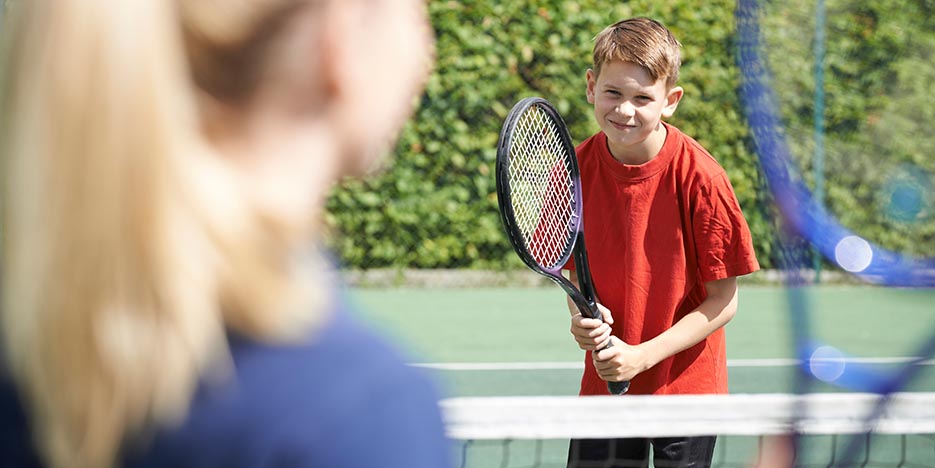Teaching Tennis to Toddlers Can Be Challenging, Rewarding
Imagine holding a piece of wood almost as long as you are tall. At the end of that piece of wood – what the big people call a tennis racket – is a loop large enough you could almost crawl through, except for the netting.
One of those exuberant big people then knocks a very bouncy ball at you the size of a softball. You’re supposed to swing that huge wooden thing, hit that big, bright ball with the netting part and propel it carefully over a net that is almost as tall as you are.
Naturally, this “game” of tennis may be a little more difficult to grasp for children than the traditional one – with smaller balls, shorter rackets and a less imposing net.
We at Golden Ocala Golf & Equestrian Club understand the challenges the game may pose to people of various heights, but teaching the little ones takes an entirely different and sometimes considerably more patient approach.
Getting Into the Swing of It
Tennis coaches say children – especially those as young as 3 – should want to learn to play tennis. Learning and playing tennis for the youngest children should always be fun. Teaching the rules ought to come later in learning the game.
The first step in teaching tennis to children can be as simple as bouncing around some tennis balls. Make sure the children have suitably sized rackets, not the adult-sized ones.
Go to a court or a park and gently toss some balls at your young players. See if they can hit the balls with the racket.
Children may experiment bouncing the balls off of walls or the pavement. The children should attempt to see how many times they can bounce a ball or hit it against a wall. These exercises help familiarize your children with the mechanics of the sport.
Know the Goal
Children should eventually learn that the aim of the game is to gain points by hitting a ball so that the opponent cannot return it while keeping the ball within bounds.
Teaching a child to serve can get complicated. Instruct the child that serves are performed in the service area of the court and are hit diagonally over the net to the other side of the court. At this point, children should be taught more about scoring and that players who serve move to the other side of the service area after each serve.
Explaining scoring to a child might get complicated and confusing. The child should learn that the winner of a game is the one who scores at least four times and wins by at least two scores. The scoring systems of 15, 30 and 40 may take some patience to explain and to learn.
Once children understand the basics, they can move onto the skills and the drills to improve their game.
Understand the Concepts
Whacking a ball over a net may sound fun, but sometimes the little ones need to understand the game’s concept. To convey that sense of order and structure, have four children take positions in the four sections of the court as if in a doubles match. Have one child throw the ball to the diagonal side of the court and have that child hit or throw the ball back.
To increase a child’s coordination, toss a ball to a child on the court and have the child bounce the ball once on the racket before hitting the ball back. This increases coordination.
To help a child with backhand and forehand shots, repetition is the most important part in getting the child accustomed to the movement. This drill also helps children get used to the whole body movement of the game.
Golden Ocala’s Tennis Club has Har-Tru Hydro-Grid® courts, the finest clay surface available; all of the courts are lit for night play. Private tennis lessons and youth tennis programs are available. Golden Ocala’s Pro Shop offers the latest in tennis fashion and custom-racket stringing. Golden Ocala also offers summer tennis camps for children.
Contact one of our tennis professionals today. Keep up with all of the latest news from Golden Ocala by following us on Facebook and Twitter.

Comments are closed here.